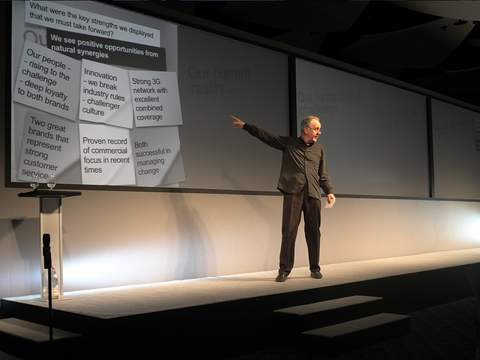Insight article

Co-creation and involvement
We are lucky enough to be introduced to dozens of large organisations interested in what we do. What's becoming clear is the increasing interest in involving a wider section of the workforce in helping to co-create their Story, rather than the Executive taking on this task exclusively from the start. I have spoken to no fewer than five companies over the last month which have indicated a desire to include either the next level of managers in the Story creation, and in one case the entire workforce.
In practice this can be very effective; by soliciting input or material from leaders which will inform the Story, the level of buy-in and engagement is likely to be far higher once the fully-fledged Story is launched in glorious technicolour. They will recognise their input, common themes and feel that they have been listened to and their opinions valued. Buy-in by leaders is critical at this level if the rest of the workforce is to be engaged, and including leaders at a very early stage can do much to overcome cynicism amongst the ranks.
It's also a valuable exercise to ensure alignment from the get-go. We worked with one organisation earlier this year where the Executive team created the draft Story, and wisely 'road-tested' it with focus groups of leaders. The resulting push-back on content and direction forced the Story back into the boardroom to be revisited before it was finally signed off. Proof that the Executive team's view of the world is not necessarily the same as their people's.
That said, I'm not sure that involving the entire workforce is necessarily productive; the majority of employees may not have the insights or experience to determine the future direction of the organisation. It can also be an unwieldy and time-consuming exercise, with such a wide-ranging collective perspective that designing a cohesive Story reflecting a common viewpoint is almost impossible.
I feel strongly that this approach is indicative of a new management style, where an inclusive and collaborative culture and strong leadership is at the top of the agenda. Gen Y is almost certainly part of the dynamic, where people expect to be part of the conversation, their opinions heard and valued.
We've developed a very powerful technique for large audiences that builds the ingredients of the Story 'in the moment' at a large event; with technology that can be scaled up or down according to budget. The final Story must still be owned by the Executive team, of course. Yet a degree of co-creation with the wider workforce is definitely worth considering if time allows; you'll reap the rewards ten times over further down the line.
